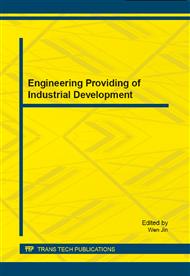p.243
p.249
p.253
p.258
p.263
p.267
p.273
p.279
p.283
Application of Computer System Based on Artificial Neural Network and Artificial Intelligence in Diagnosing Child Attention Deficit/Hyperactivity Disorder (AD/HD)
Abstract:
This paper used computer to simulate thinking modes of human brain, to establish an artificial intelligence expert system for diagnosis and treatment of child AD/HD based on artificial neural network. The diagnosis system involves expert knowledge database, artificial neural network and the relational database. The clinical data were obtained from 10 epidemiological and outpatient department, and 1125 valid data were harvested for the system compilation. The diagnosis of 627 cases adopting the man-machine double-blind controlled trial, the Kappa value was 0.98 (P < 0.001). The research can help junior clinicians to learn abundant clinical experiences of senior child psychiatrists, and can help children of AD/HD throughout the country.
Info:
Periodical:
Pages:
263-266
Citation:
Online since:
September 2014
Authors:
Price:
Сopyright:
© 2014 Trans Tech Publications Ltd. All Rights Reserved
Share:
Citation:


